One of the most feared and controversial critters that will ever grace your home, rats have a very mixed reputation. The fact that they’re so closely related to mice (but much larger) is enough reason for many.
However, feral rats in the home can cause all sorts of damage and pose some health risks, so even those who love rats have a reason to keep their home rodent-free.
Let’s have a closer look at these curious critters and why they both are and aren’t lovable. Then we’ll go over how to get rid of rats and why some methods are actually as bad as having the rats themselves.
Related: How to Get Rid of Mice
Getting to Know Rats
Worldwide, there are 56 known species of rat. You may be familiar with a few of them, but some are quite unusual. For example, a Gambian rat can measure as long as three feet, while the Sumatran bamboo rat has similar measurements and weight to the average housecat!
As with many critters, rats have been partially domesticated. Thus, they’ve become both a boon and bane for humans. They’re also known for their craftiness, with the Rat from the Chinese zodiac cheating to gain a place at the expense of the cat. Humans born during the Year of the Rat are thus considered quite intelligent and good at manipulating their way out of trouble.
Males are known as bucks, while females are known as does. This doesn’t mean they look good mounted on your hunting trophy wall or are necessarily “endeering”, however.
It’s also important to note that 16 species have threatened status. The good news is, the species you’re likely to run into, such as Norway rats and roof rats (AKA brown and black rats, respectively), aren’t part of the endangered list. The bad news is that the rat population for these species is often out of control in urban settings.
A Rat’s Life
Rats begin their life in a litter of six to ten pups. It only takes about three or four months before the pups become sexually mature, and adult females are capable of giving birth every three weeks.
This high reproduction rate is common in rodents, who serve as prey animals for a large portion of the food chain. A healthy rat will generally live only two or three years in the wild.
Rats live in communities known as a mischief. Each mischief is very close-knit, but will harass rats belonging to other groups. Members of the community work together, nursing the sick, raising the group’s pups, and sharing food. As a result, we have a lot to learn from these critters, and it’s no wonder some cultures revere them.
What Do Rats Eat?
Believe it or not, rats are generally picky eaters. They prefer a vegetarian diet of fruit, nuts, plants, and seeds. This diet expands to include refuse or carrion in cities, where food is more scarce.
As with many rodents, a rat’s front teeth continue to grow as much as five inches per year. To combat this, they will often gnaw on hard surfaces, even if those surfaces aren’t edible.
Rats vs Humans
Rats are one of the most common “scary” rodents, especially for those with musophobia. They’re highly intelligent and only invade homes when they need food or shelter. Unfortunately, their intelligence means they can get into all sorts of trouble, eating into boxes and expertly navigating the smallest of spaces.
Their teeth are strong enough to cut through cinder blocks or even lead, leading to potentially expensive property damage. Rats are also known to potentially carry over 35 different diseases, directly or indirectly, thus having a feral rat in the house is never a good thing.
See Also: Most Common Phobias In Regards to Pests
On the flip side, humans have often used rats for experimentation due to their genetic similarity to us. These tests have often been brutal and to this day, the term “lab rat” is something you never want to be called.
For centuries, it was believed rats were the critter responsible for spreading bubonic plague. However, it has since been revealed that rat fleas were the actual vector. The so-called plague rats were simply infested with these fleas. Even today, there are about a dozen cases of bubonic plague per year, but we now know who’s really to blame.
Rats as Companions
Rats aren’t all bad, however. Fancy rats especially make some of the best pets, and they can be quite loyal. Rats can get along with cats and other pets, and can even be trained.
Best of all, they have a wide range of emotions and scientists have discovered they’re ticklish and will actually chirp in laughter. The pitch is too high to hear without a microphone, but it’s still an endearing trait. In fact, tickled rats have given us the first true insight on animal optimism.
Rats vs Mice
While it’s true that rats and mice have their own genera, it should be noted that the two species do overlap in places. They are close enough to be able to interbreed (although it’s not common). In fact, size is the main differentiating factor for most scientists, even on a genetic level.
However, things are a little different on the pest control front. Here, the mouse provides slightly different problems needing slightly different solutions, thanks to their smaller size and shorter lifespans.
How to Identify a Rat Infestation
Before you can get rid of something, you must first confirm its identity. Knowing your rodent may be important, as rat infestations have similar signs as mice but may require different control methods.
This is especially true if you haven’t seen the critter for yourself or your cat insists “it was THIS BIG”. When in doubt, hire a pest control expert to evaluate the situation.
Nesting Signs
While it’s not easy to spot a nest, you can find several signs of one being built. These include openings chewed through walls or floors; or nesting materials, such as bits of paper, cardboard, or plant matter.
You may also detect a stale, faint ammonia, or mildewy smell caused by nesting and rat urine.
It’s in the Poop
EVERYONE knows mice fed with food coloring produce the sprinkles we humans put on our donuts and cupcakes. Rats have much bigger droppings and these are almost always brown. You’re likely to find them near food sources such as in pantries or on kitchen counters.
Other Potential Signs
Rats know that boxes and other containers are meant to keep food fresh, and will chew holes in that box of Quaker oats or instant potatoes to get at the good stuff.
How to Get Rid of Rats
As you can see, rats aren’t mean, but they know how to take advantage of an opportunity when necessary. Your home presents an answer to many of the problems a rat might face, such as food, shelter, and safety. Thus it’s not unusual to find these critters invading when there’s a need the outdoors cannot meet.
No one method is 100 percent guaranteed, but there are quite a few effective methods available. Depending on your preference, these may be kill or no-kill solutions.
Before You Start, Close the Hotel!
Before you can get rid of rats (or any other pest, for that matter), you must consider what makes your home attractive to them and eliminate those features.
Clean up any debris or garbage that might provide food or a place to hide. You’ll also need to remove bird feeders (squirrels love them as well), leftover pet foods, or other potential sources of food or water from your yard or indoor locations where rats may be visiting.
You will also want to seal off any potential access points to structures on the property. Rats can fit into very small spaces, so don’t pass up a small hole just because you can’t imagine a rat fitting through it.
Sealing any entry points also has the benefit of keeping other critters out such as mice, lizards, and even bats. Note that you may choose to use exclusion devices for entry points where you suspect a nest. These allow critters to exit only to find they can’t get back in.
How to get Rid of Rats in the Garden
Rats are primarily vegetarian, but they also hunt insects including flies, spiders, June bugs, and moths. This makes your garden an attractive buffet in more ways than one. Obviously, you can’t just eliminate the food you’re growing, so instead, an easy solution is to build a barrier.
Garden barriers should be a couple feet high and extend at least a foot underground so the rats can’t easily get past it. The material should also be something too smooth to climb, such as sheet metal or plastic sheeting. Rats are excellent climbers. While they can’t climb as well as mice, textured walls are no match.
You can further fortify these barriers by adding pepper spray or essential oils along the base. Alternatively, try using predator urine granules or attract natural predators such as owls or hawks into your yard.
Traps are a third option, and they work quite well if you pick a tasty rodent bait. However, the most effective traps need to be checked frequently and may need to be camouflaged.
How to Get Rid of Rats in Your Walls or Attic
This can be a difficult problem, as the rat is safely hidden away from predators and hard to reach. By far, the best method is to use traps or hire an exterminator.
You’ll need to deal with such an infestation quickly, as rat waste and chewing habits could result in a wide range of safety issues. Be sure to follow up a successful evacuation with a thorough treatment of the previously inhabited area to reduce the risk of disease or mold.
Getting Rid of a Rats’ Nest
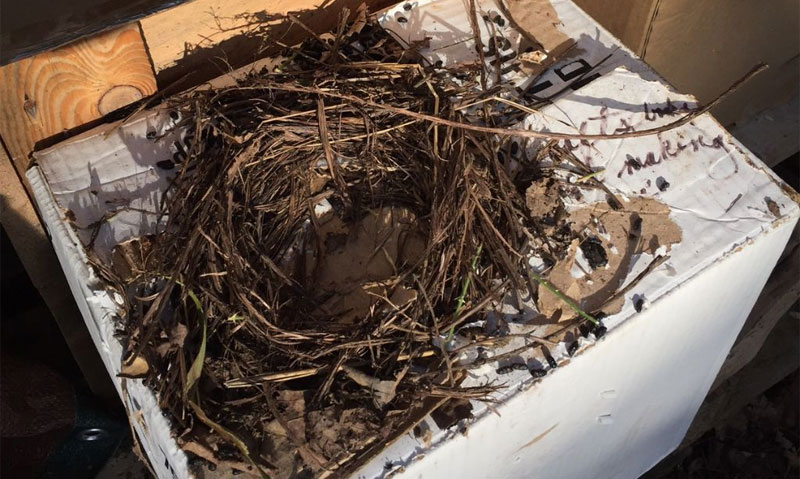
Once you’ve eliminated or removed all of the rats, you’ll need to deal with their nest. Rat nests take two forms: a burrow with two access points, or a nest of debris built in a wall or other sheltered space.
In both cases, you’ll want to wear gloves and other protective gear to avoid the risk of illness. Remove any dead rats or pups, carefully bagging bodies and transporting survivors far from home.
Next, take a bucket of water with a hefty dose of bleach (1-1/3 cup per gallon or so) and soak down the nest area and any spaces nearby where you see dark streaks or other markings. Let the water soak for about five minutes. Then remove any solid debris and feces with paper towels and scrub the area down. Rinse thoroughly and allow to dry.
Related: How to Get Rid of a Dead Mouse Smell
Rats, much like carpenter ants and other critters, leave a scent trail to find their way home when visibility isn’t good. You’ll need to scrub places the rats have traveled (including along baseboards and the area leading up to entry points) with vinegar to remove the smell. Securely seal all trash from the cleaning effort and dispose of it properly.
In the case of outdoor burrows, you may want to fill the burrow with dirt. Mixing in some diatomaceous earth will help discourage any excavation attempts, as the tiny fossils can cut into the rats’ paws, causing discomfort.
Rat Traps
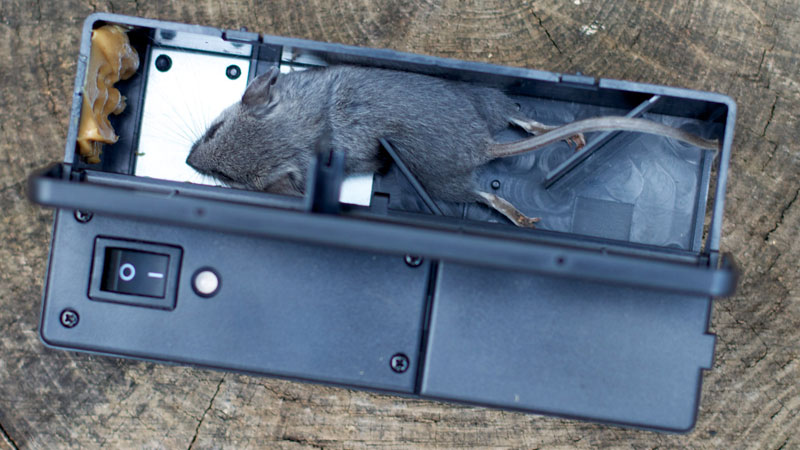
You can use mouse traps, but (this is from personal family experience) the snap traps tend to injure without killing.
Thus, the rat may well escape, leaving a little bloody trail across your kitchen floor. Instead, here are some common types of trap known to be more effective:
1. Electric Traps
This is by far the safest and most humane form of kill trap when you have a conscience. Electric traps, such as this one, use fresh bait such as peanut butter to lure the rat in and then deliver a single electric shock that instantly kills the rat.
A light comes on whenever there’s something in the trap, allowing you to tell at a glance if it needs emptied. Note that it’s possible for children or pets to get a nasty shock if they put a hand or paw in the trap, so be sure to keep these out of their reach when using.
Electric traps work great for almost any indoor area including the garage, basement, attic, kitchen, bathroom, and others.
2. Glue Traps
A good glue trap with a non-toxic adhesive such as the Catchmaster, is a weapon not to be trifled with. Lay these bad boys down along the edges of walls or other places the rat is likely to travel and they’ll get stuck fast. The more they struggle, the more stuck they’ll become.
These traps can be used as kill traps or (if you’re quick enough and choose a dissolving glue) may be used to relocate the rodent. As much as we like the notion of using these as a non-kill method, this requires potential combat with a live and very scared trapped rat.
3. Live Traps
Despite the health risks of an infestation, rats actually play a valuable role in our ecology. As such, no-kill rat traps are a great method. These come in a wide range of styles and sizes, but all have one thing in common: They capture one or more pests without causing injury. Havahart and AB Traps both make excellent catch and release rat traps with the latter being a much better value.
You can then transport the critter(s) and release them back into the wild. The release zone needs to be a minimum of five miles away (ten is preferable) so they cannot find their way back to your home.
Natural Remedies
Using natural remedies can be a mixed bag. On the one hand, they can be less effective overall than chemical or trapping methods. On the other hand, rats won’t develop an immunity towards them and they’re much safer for your family and the environment.
Related: Can You Kill Rats With Coke or Pepsi?
1. Decoys
Rats aren’t fools, which will work both in and against your favor. Having cats or other natural predators may help discourage rats. Likewise, placing used cat litter near access points may help prevent rats from returning to their nest.
If you’d rather not have living predators, you may use such decoys as a motion activated owl or even owl feathers to trick a rat into avoiding an area. When using decoys, it’s important to shift them around, or the rat will realize it’s not the real deal.
One unusual technique that may be preferable in some situations is to use audio of owls, set to go off at random times or when motion is detected. This method isn’t used often for home invaders, but has proven quite successful in warding off coyotes and wolves from farmland.
This technique may prove useful when combating rodents in a garage or other area where an owl might logically take up residence.
2. Essential Oils and Spices
Essential oils may work as either a skin irritant or an olfactory repellent. Citronella, eucalyptus, and peppermint oils all create a strong odor that’s pleasant to humans but overpowering for rodents.
Applying a fresh batch daily will discourage rats and many other pests from approaching treated areas. Just be warned, some oils, such as eucalyptus, aren’t safe for some pets, so consult with a vet before using a specific essential oil where your pets may encounter it.
Capsaicin, the substance which gives peppers their heat, is a popular physical repellent. Creating an infusion of hot peppers in water over 24 hours will result in a very basic pepper spray. Squirt the mixture in places where you’ve seen signs of rat activity (such as along baseboards).
The capsaicin will create a burning sensation when their paws touch it, causing the rat to avoid that area without being physically harmed. This method will require a fresh application every few days, especially if being used outdoors to protect a garden.
3. Baking Soda
Baking soda is an easy kill method which, while far from painless, has a very high success rate. Simply sprinkle some baking soda where rats have been feeding or create an edible mix of baking soda, flour, and sugar.
When baking soda enters a rat’s stomach, it causes gas to release. Rats can’t simply belch the gas out, and it continues to distend their stomach until the pressure kills them. It’s a barbaric way to die, but when all else fails, it may prove the most effective option.
Rat Poison: The Dirty Truth
Anyone who’s visited our site before knows we’re against lethal methods in any instance where the critter may be endangered or beneficial. This is especially true of poisoning rats, which has proven more dangerous to non-rats than the rats themselves.
Poison for rats is easily ingested, and often works by destroying the rat’s desire to eat or drink, leading to a slow and brutal death. Other forms include anticoagulants, literally causing the rat to die from internal bleeding. Even if these methods were quick and painless (which they’re not), the risk of using them is too great.
A wide range of beneficial critters can accidentally come into contact with a lethal dose of rat poison. This includes children and pets. The EPA has tightened restrictions on rat poisons multiple times, but the dangers remain high.
Even popular brands of “safe” bait stations have been found to be dangerous in certain cases. To learn more about these poisons, how they’re regulated, and why they’re so dangerous to use, check out the official results of a 2008 safety review conducted by the EPA.
Some Final Thoughts
Back in the day, people thought that poison baits or pest control companies were the only way to deal with a rat infestation. However, our understanding of rats has come a long way in just the past 50 years or so alone. This has resulted in effective, humane traps as well as better ways to control the rodent population without resorting to chemical methods.
Just remember, while you can purchase rats as pets, any intentional or accidental contact with feral rats could lead to major health risks. By sealing any potential access points and removing any piles of debris from your yard a rat might take shelter in, you can greatly reduce the risk of encountering these critters.
- How to Get Rid of Hawks - March 8, 2024
- How to Get Rid of Pill Bugs (Rolly Pollies) - March 1, 2024
- How to Get Rid of Groundhogs (Woodchucks) - February 5, 2024

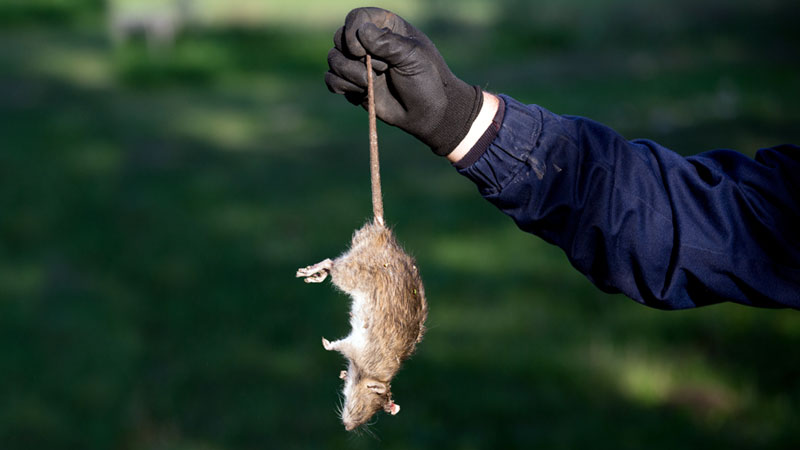
 Just tell me how to get rid of ’em.
Just tell me how to get rid of ’em.
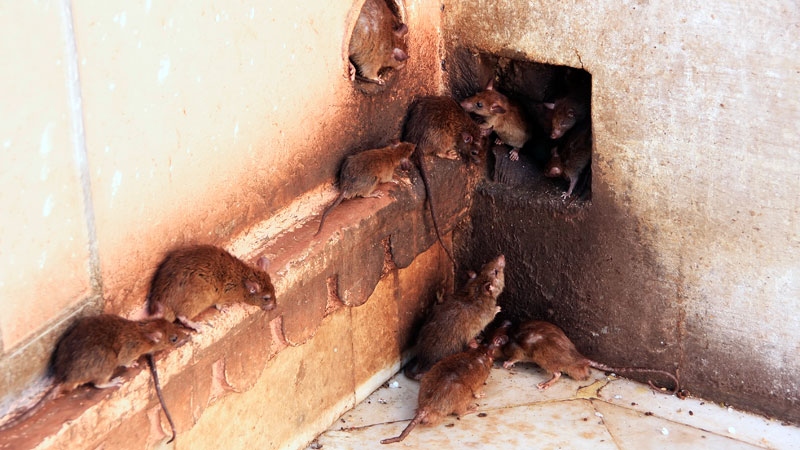
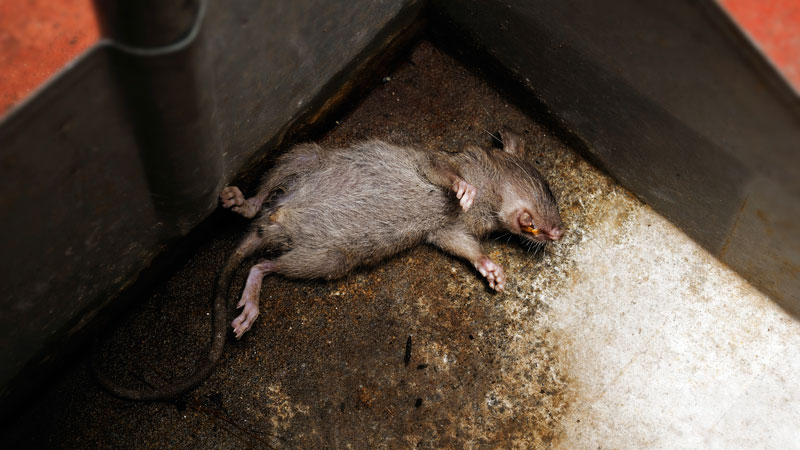

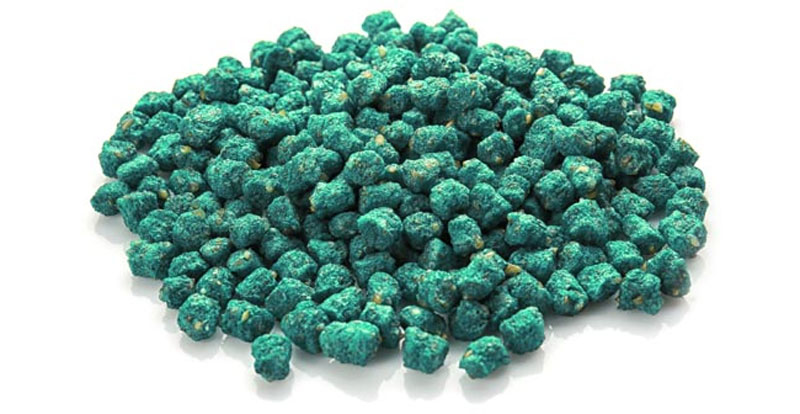
Is it more humane to hire a no kill rodent control company? They seal the house and use camera monitors to track the capture. Then release the animals according to local regulations. Is this better than snap traps?
You could make arguments for both. Live traps make a lot of sense for catch and release of some critters but personally, I wouldn’t use them for mice and rats (unless it’s somebody’s pet). Even if you catch and relocate the mouse or rat, the process would likely cause them a lot of stress and relocating them to an unfamiliar area could harm their survival chances and you could just be making them someone else’s problem.
Snap traps are generally considered a humane option for controlling mice and rats when used correctly. True, they may not be insta-kill 100% of the time but they will definitely be much more effective. I feel a no-kill rodent control company is more of a marketing tactic than anything.